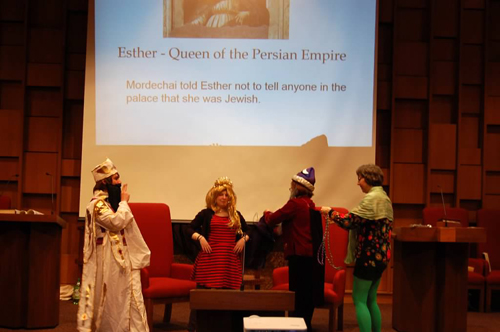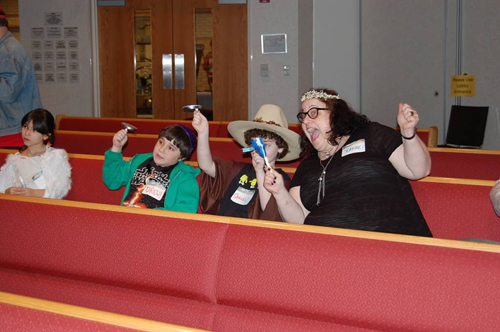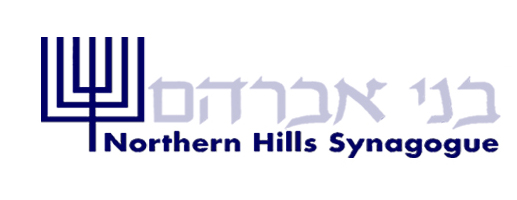The Holiday of Purim
The basic story of Purim is well-known: how King Ahaseuerus of Persia let himself be influenced by the wicked counselor Haman to order the annihilation of all the Jews in his vast empire, and how the Jews were saved by the resourcefulness of Mordecai and his niece, Queen Esther.

Historically, it is questionable whether any such episode occurred exactly as it is reported in the Book of Esther. However, it is quite possible that the festival of Purim does go back to some actual incident in the history of the Persian Jews, for they have observed Purim as a major holiday since ancient times. More significantly, the story recorded in the Book of Esther is an uncannily accurate depiction of Jewish life in the diaspora. We are indeed scattered throughout all parts of the world. Also, we have, for the most part, kept our own laws and customs. We have been, in part because of our separate communal existence, a ready scapegoat for social, political, and economic problems.
We have been often the target of slanderous accusations, ranging from the charge that we use the blood of Christian babies to make matzah to the claim that our concern for Isrel makes us disloyal to the United States. Also, it is a recurring phenomenon in our history that some of our people rise to high places in the general society by concealing or down-playing their Jewishness, and, sometimes, they come to the aid of their people in time of crisis, as did Queen Esther. Finally, we have survived many attempts to destroy us, including that of the Nazis, which, for the first time, literally fulfilled the intention of Haman, "to destroy, massacre, and exterminate all the Jews, young, and old, children and women."
Purim falls on the 14th of the month of Adar, the date on which according to tradition, the Jews of Persia overcame their enemies. In a leap year, when there are two months called Adar, Purim falls in the second one. The Sabbath before Purim is called Shabbat Zakhor, after the first words of the special maftir for the day "zakhor et asher asah l'kha Amalek" "Remember what Amalek did to you."
When the Jewish people was on its way out of Egypt, the Amalekite tribe treacherously attached them from the rear. From that time on, Amalek has been a symbol for the most vicious kind of anti-Semitism. According to tradition, Haman was a descendant of Amalek (and he certainly represented the same idea); therefore, on the Sabbath before Purim, we read in the Torah the passage which commands us to remember Amalek and what he represents.
The day before Purim is Taanit Esther, the Fast of Esther. This minor fast day is a reminder of the period when the fate of the Jews of the Persian Empire was hanging in the balance. According to the Book of Esther, Esther and her attendants fasted for three days in order to avert the evil decree, and there is a suggestion that the Taanit Esther should last this long as well. For obvious reasons, that suggestion has not been widely accepted! Purim begins, of course, at sunset at the end of 13 Adar. In the Amidah of all the services for the day, and in Birkat Hamazon, we insert the passage "al hanisim . . . biy'mey mordekhai v'ester" - "for the miracles . . . in the days of Mordecai and Esther."
After the evening service, the Megillah, the Book of Esther is read. The Hebrew word "megillah" means simply "scroll", and so might be applied to any book of the Bible which is written this way, but, since only the Book of Esther is universally read from a scroll, it has become "the" megillah. A kosher megillah must be written by hand on the skin of a kosher animal, like a sefer Torah. It has become customary to make noise to blot out the reading of the name of Haman. This custom is probably based on the commandment of the Torah to "wipe out the mention of Amalek." (A sofer, or Torah scribe, tests his pen and ink before starting to work by writing the word "Haman" and then crossing it out. Conversely, the name of God, which must never be erased, does not appear in the Book of Esther. For that reason, some rabbis questioned its inclusion in the canonical Scriptures. It was explained, however, that the story of Purim itself testifies to the religious character of the book.)
At the evening service of Purim before the reading of the megillah it is customary to collect mahatzit hashekel, a half shekel, from each man over twenty. In the Torah (Ex. 30:1-6) this half shekel was a kind of head tax which every Israelite of military age had to pay, as atonement for any killing which he might do in the course of his army service. Later in Jewish history, the shekel collection was used for the upkeep of the Temple; an entire tractate of the Mishnah and the Talmud of the Land of Israel, Shekalim, is devoted to that subject. In more recent Jewish history, the collection has been used for this support of Jewish institutions or general charitable purposes. The accepted practice today is to done one and a half times the main unit of currency of the country in which one lives (for us, $1.50).
An integral part of the observance of Purim is lighthearted rejoicing. We are encouraged to forget ourselves (up to a point), and the traditional prohibition of wearing clothing appropriate to the opposite sex, and the disapproval of drinking, are relaxed for the occasion.

The megillah should be read again at the morning service.
Among the finest traditions of Purim are mishloah manot (the giving of gifts of food) and matanot la-evyonim (donations to the poor). These customs are based on the ancient practice recorded in Esther 9:22, and emphasize the social dimension of the holiday, in its joyous and its serious aspects.
It is customary to eat a large, festive, meal (seudah) in the late afternoon or early evening of Purim, before the holiday ends at sunset. When this seudah is eaten in large company, various forms of entertainment are often enjoyed. There is a Purim kiddush, a parody of the festival kiddush. (Technically, since Purim is not a major holiday, on which we refrain from work, there is no kiddush for Purim), and in the yeshivas, someone (the "Purim rebbe") delivers a lecture on "Purim Torah", a parody of the year's studies.
As if one day of Purim were not enough, there are some communities, cities which were surrounded by walls in the days of Joshua, which observe Purim a day later, on 15 Adar. This practice is based on that of the Jews of the ancient walled city of Shushan in Persia reported in Esther 9:18. The Jews of Shushan were given an extra day on which to avenge themselves on their enemies. In Israel today, the second days of the Festivals (Pesah, Shavuot, and Sukkot), observed in the diaspora, are not celebrated. However, it is possible in Israel to observe two days of Purim - the 14th of Adar in Tel Aviv, and the 15th in Jerusalem!

